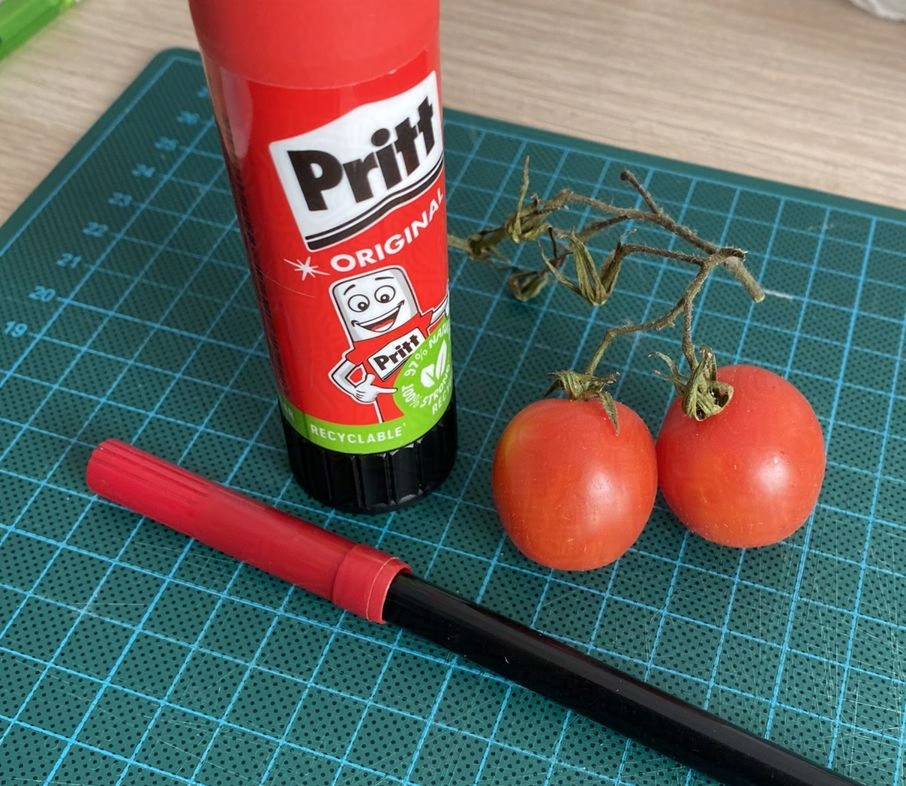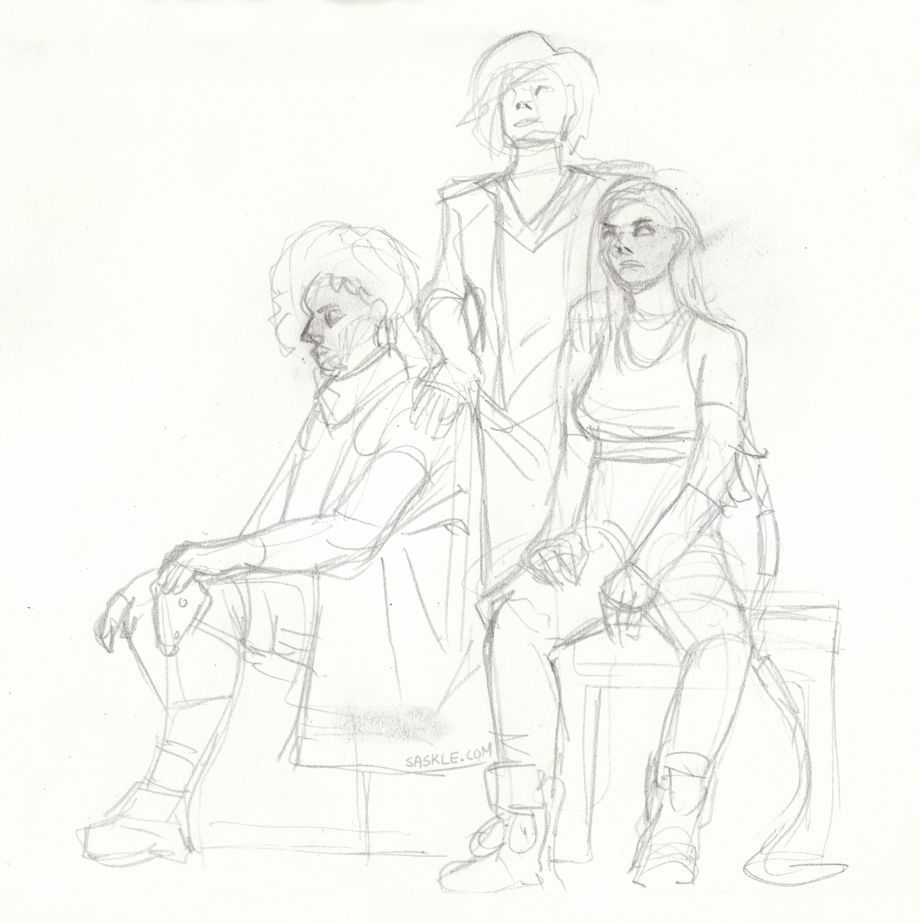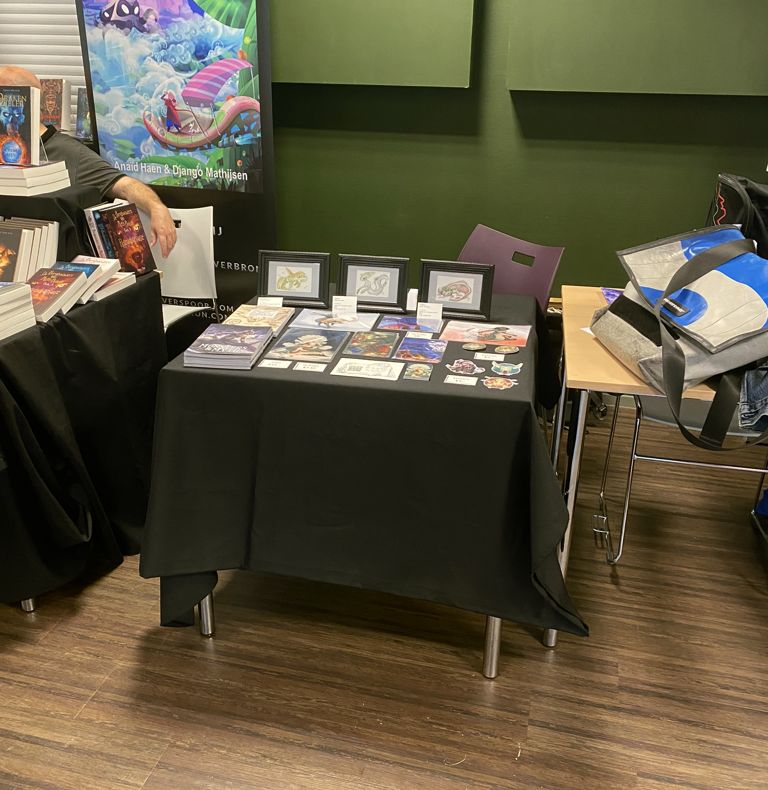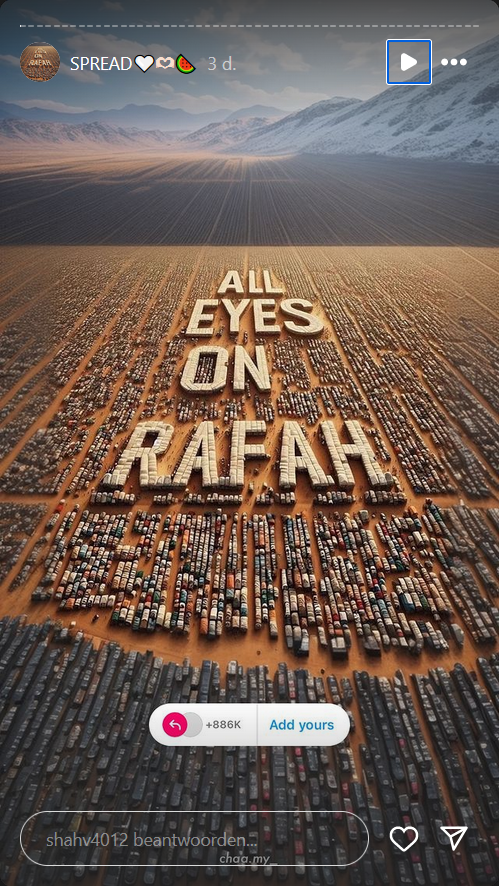
As a teenager I loved the art classes we had, but there was one perculiar thing that frustrated me: our painting set included magenta as a primary colour instead of red. No matter how hard I tried, I couldn’t mix vibrant reds or oranges with this colour.
In art school I no longer encountered this issue – there were no prescribed palettes or colour theory classes. In the one painting class I had we were asked to bring a classic palette of titanium white, process black, yellow ochre, burnt umber, cadmium red, lemon yellow and ultramarine. No magenta or rose. I never had any issues mixing colours I needed.
So I had forgotten about my irritations until I read an Instagram post from a Dutch drawing magazine. It stated:
Did you know you can mix all colours with just a cyan, magenta, yellow, black and white pencil?
Naturally, I was sceptical. I had a completely different experience in my art classes, even though I know magenta, cyan and yellow ink print most colours just fine from my printer. If the theoretical primary colours work for printing ink, why doesn’t it for my paint? Are coloured pencils that different? Was it the brand we were using? Is it my technique?
So, to figure out what was the problem I decided to test this using different materials: the pencils mentioned, watercolour, and of course the dreaded gouache.
Get ready for a deep dive into colour!
Challenge accepted
A little disclaimer is in place here: colour perception is extremely subjective. What I call red might be more like orange to you, let alone that I know for sure that you will perceive the same colour as I do. Add to that the fact that I have to scan and photograph my paints and pencils, which adds another layer of complexity. I do hope, however, that you’ll see the same differences as I do, and that all this is still valuable to you!
To begin, I mixed swatches of magenta with yellow and compared it to ‘true’ red. I use Winsor & Newton Cotman Water Colours, Caran d’Ache Pablos coloured pencils and Royal Talens Gouache for these tests.
Apart from gouache, my materials didn’t call any of their colours ‘magenta’. I used my own judgement to pick a colour closest to primary magenta, you will inevitably have differrent results using different colours.



What did I learn? Well, comparing to a ‘true’ red, the red mixed by magenta and yellow doesn’t look too bad in watercolour. It appears to be less vibrant, but it’s close enough that I would call it a worthy substitute if one has no acces to ‘true’ red pigments.
Coloured pencil is a whole different story, however. I couldn’t get Carmine and Yellow to blend into something reddish, compared to Scarlet. The Pablos are not the softests pencils around, but not the hardest either.
And in gouache, well… It comes near something reddish, but comparing with vermillion it appears dull. Exactly like I remembered it.
In a straight comparison, ‘true’ red wins 2 out of 3.
In order to put magenta really to the test, I need to compare it in relation to different colours. After all, most paintings will have more colours than just red or orange.
Tomatoes and glue
I figured the best way to test magenta’s mixing abilities would be to paint objects of various red shades. So I put a few red objects together with green for good colour contrast, picked three ‘primary’ colours for each medium, and started painting.
I decided not to use black pencil or paint in these tests, as it wouldn’t make a difference for mixing red from magenta and yellow. One could argue you need black to mix less saturated, more neutral shades, I’ve always liked to use complemetary colours to create neutrals.
Watercolour


In watercolour, magenta and yellow make a fine red, or at least something that fully ‘reads’ as red in a scene. With just these colours, however, the deep orangy-red of the tomatoes is not quite the same colour as in real life (though I admit it does look close in the scan compared with the photo). The yellowish deep green of the branches is also hard to match with this set.


I’ve written before that you don’t need an exact colour match to get ‘realistic’ colours in a still life or plein air scene. If the values are good and the colours are close enough, we will read the colours as right. Though that doesn’t mean you have to settle for ‘not quite’: in the second painting the colour of the tomatoes is a closer match. The green on the glue and the tomatoes’ leaves looks more like in real life. The background, however, is much duller: ultramarine is a much weaker blue. Also, the pinkish felttip is also far less saturated.
In my opinion both sets of ‘primary’ colours have their strenghts and weaknesses, you should pick which one fits your needs – or use all six colours!
Coloured pencils


In this scene the coloured pencils performed better than in the swatches. The tomatoes and glue do read as red. But when it comes to true accuracy, it’s not really close.
The hard thing about blending with coloured pencils is that the mixing happens in the work itself instead of on the palette. Making a mistake means you either have to try to erase it and pray the paper can handle that; or starting over. Additionaly, the blending is optical, depending on the tooth of the paper, one can clearly distinguish yellow and blue in a mix of green.
I won’t call myself very experienced with coloured pencils, so someone who’s more skilled might get better results, like a more nuanced difference in hue between the glue stick and the tomatoes. Though the ‘red’ mixture probably still would look purplish.


In the second test I chose Malachite Green as ‘blue’, because it came very close to the colour of the cutting mat I was depicting. Naturally, the magenta felt tip does not look like it’s real counterpart, but it reads as more purple-ish than the glue stick or tomatoes, which is enough for my goal. I’m much more interested in getting the colour of tomatoes right, and they do look red now!
Gouache?
At the moment of writing this, I don’t have any other blue gouache paint than the cyan back from high school, neither a different yellow. The test didn’t seem interesting enough to just swap out magenta for red. I do want to try this when I have more colours, though!
All in all, it seems that magenta and yellow can substitute red, but the results vary per material and colours used. I believe it is more interesting to ask yourself, what colours are most important and need to pop, and decide ‘primaries’ based on that, than to stick to magenta, yellow and cyan only.
Still, colour theory states that all colours can be mixed from the primaries, or can’t they? Why is practice different from theory?
Enter science: colour perception
To answer that question, we first have to familiarize ourselves with the physics of light and how our eyes perceive colour.

Visible and invisible light, Wikimedia Commons CC BY-SA 4.0
Light consists of a spectrum of different wavelengths, of which only a small band is visible to us. Within that band, all the colours of the rainbow are distinguishable by their different wavelenghts, violet having the shortest wavelengths and red having the longest.

The human eye perceives colour through three types of photoreceptors (cones), each sensitive to different parts of the visible spectrum (roughly corresponding to red, green, and blue). When daylight enters our eye, all receptors will respond about equally, which our brain translates to white light. When the light of a candle enters our eye, however, the green and red receptors will respond more than the kind most sensitive to blue light. That combination of signals translates our brain to yellow-orange light.
This is the concept of additive colour mixing: not all perceivable colours have their own band on the frequency scale, but by combining different wavelengths, we can see almost every colour. As the receptors in our eyes are tuned to red, green and blue, almost all perceivable colours can be mixed from those. So the ‘primary’ colours in additive mixing are considered red, green and blue.

The nuance is that the sensitivity of the cones in our eyes does not exactly map to red, green and blue. In fact, the cones for red light have their peak at orange-yellow. In addition, the ‘primary’ colours of light do not encompass the full range of visible wavelengths; thus, some colors cannot be perfectly recreated. There is no set of three primaries that mix all colours (source).
The graph on the right is a visualisation of all visible colours by a ‘standard human observer’, according to CIE 1931. The coloured triangle is the range of colours that the sRGB colour space standard encompasses, which is the standard for monitors, printers and the internet since 1999. The ‘primaries’ of red, green and blue draw a triangle over the available colour space, which has a wide gamut of available hues, but not all visible colours.
Subtractive mixing
Light does not only directly enter our eyes from a source, but also as reflected light from objects. We perceive the world as colourful because every surface reflects different wavelengths and absorbs others. A tomato is red because it absorbs all wavelengths except those of red light, and therefore we perceive tomatoes as red objects.

This is important for subtractive colour mixing; which is based on pigments or inks that reflect and absorb different wavelengths of light. A cyan object absorbs most, if not all red light, and reflects the green and blue wavelengths. Therefore it is considered a ‘primary’ colour in subtractive mixing. The same goes for yellow, which absorbs blue light most effectively, reflecting green and red.
This is where cyan, yellow and magenta come from as ‘primary’ colours in subtractive mixing: they mix the widest gamut of colours. But it is impossible to mix all colours with this set; just as it is impossible to create all colours with green, red and blue light.
In 1998, Pantone patented a six-colour printing system to combat the limitiations of the CMYK printing standard called Hexachrome. Using orange and green inks, the range of reproducable colours expanded and pastels and skin tones were more recreatable. In the end, the system was too costly and discontinued in 2008. It shows once again that the CMYK printing standard, while being the most cost-effective, cannot reproduce all colours.
Subtractive mixing in practice: pigments
We now know that not all colours can be mixed with magenta, cyan and yellow, though a great deal can. But that doesn’t explain why I have such a hard time mixing red and orange in gouache rather than watercolour. There is another limitation in play when it comes to paint and pencils: pigments.
There is a myrad of synthetic pigments available nowadays compared to the days of the old masters. However, there are still no exact equivalents of the scientific, ideal magenta, cyan and yellow primary colours. Paint manufacterers pick a pigment that comes the closest, or mix two or more pigments to approximate the primary colour if they aim to sell it as such. This means that there will be differences between manufacterers which pigments they include in colours they sell as ‘primary’.
Unlike paint colour names, pigments are standardised by a code. Those codes start with P, followed by a letter indicating the colour (B for blue, R for red, etc) and a number. That way one can compare colours of different brands.
Let’s have a look at the pigments used in the materials I tested:
| Watercolour | Coloured Pencil | Gouache |
| Alizarin Crimson Hue PR206 | Carmine PR209 + PR23 | Permanent Rose (Magenta): PV19 + PR122 |
| Cadmium Red Pale Hue PR254 + PR188 | Scarlet PR112 + PO13 | Vermillion PR4 |
| Cadmium Yellow Hue PY175 + PY65 | Yellow PY3 + PY154 | Lemon Yellow PY3 |
| Lemon Yellow Hue PY175 | Lemon Yellow PY3 |
If you’re interested in knowing which pigments your brand uses, I fully reccommend artistpigments.org! It lets you compare pigments and brands for a variety of mediums, and displays them conveniently on different colour wheels.
First of all, it seems lot of colours are composed of multiple pigments. This is an important thing to realise: there is this persistent myth that the primary colours are ‘pure’ and ‘unmixed’, while all other colours are mixtures of those primaries. The table shows this is nonsense, like it is nonsense in light too: yellow light can both be a mix of green and red wavelenghts or the yellow wavelenght itself, there’s no way to tell with the naked eye.
Another thing that stands out is that all materials use different pigments for the ‘magentas’ in my tests. No wonder I got such different results! To make the differences between each colour even clearer, I’ve plotted them out on a colour chart:

Alizarin Crimson (PR83) is the most reddish ‘magenta’ I’ve used, which is probably why my results weren’t that bad with this colour. Talent’s Permanent Rose (which wasn’t mapped on artistpigments.org so I approximated it myself), on the other hand, contains the least vibrant mix, while being the one closest to the magenta axis. Because it is cooler in temperature than the Alizarin is it harder to mix vibrant reds with this colour.
So in theory, yes, you should be able to mix vibrant reds and oranges using magenta, but in practise we are limited by the pigments used in our materials. When you’re out to buy a magenta for mixing, best do some research on the pigments that have the mixing qualities you need.
What about red as a primary colour?
You might have learned at school that the primary colours are red, blue and yellow. While I’ve explained before that cyan, magenta and yellow mix the widest gamut, there are multiple reasons why the idea of red, blue and yellow as primaries is still prevalent.

Long before Isaac Newton discovered daylight consists of light of different wavelengths, artists knew that blue and yellow pigments mixed together make green. The three colours that could not be mixed by the natural pigments artists had access to were red, blue and yellow, hence these were identified as ‘primary’. This was picked up in classical art education and later by Bauhaus, too. Johannes Itten’s book The art of color : the subjective experience and objective rationale of color, published in 1961, still has influence how colour is teached, even though science and technology have proven that cyan, magenta and yellow are superior primaries.
What also doesn’t help is that in additive mixing, red is a primary colour after all!
I do have red, why bother mixing it?
Most painting sets offer red, multiple blues and yellows, browns and greens to give you the most versitality. I suspect these colour choices are based on traditional palettes and long-known pigments, which help you get good results quickly. So unless you’re deliberately using a limited palette of just the primaries there won’t be much reason to skimp on red.
What irks me is that the advice sometimes is ‘you don’t need anything else than the primaries’, which can be very frustrating for beginners. It sure was for me! I couldn’t understand why I couldn’t mix bright reds and oranges with the alleged primary colours. But it goes further: imagine painting a landscape with magenta, yellow and cyan: the sky might be the easiest colour if it’s a sunny day, but even there you have to tone down the bright cyan with the other two colours to get a realistic sky colour. But what about the many shades of green and brown? Every one of those colours needs at least three colours and black/white to make it look like what you see; as a result you probably spend more time mixing than actually painting.
Don’t get me wrong, you wil certainly learn a lot. But most subjects in real life aren’t just that saturated, with ‘primaries’ you spend a lot of time to tone them down to the colours you actually need. Isn’t it much nicer to have a palette with burnt umber and viridian in it then?

Limited palettes also don’t have to be limited by the primaries themselves. The portraitist Anders Zorn is said to use just four colours for his paintings: white, yellow ochre, vermillion and ivory black. This palette is is in fact nothing more than white, yellow, red and a cool black. Only the yellow ochre could be considered a ‘primary’ here, and it’s a very muted yellow still. But where would you need bright blue for if you’re painting skin and hair anyway? The ivory black mixes a cool grey that is perfect to balance out the warm tones.
What I’ve learned
To come to a final verdict; whenever magenta and yellow make red depends on the materials you use and the pigments or inks in those materials. I was pleasantly surprised how close yellow and magenta got to red in watercolour. But when it comes to my gouache my teenage-self was right: the mixed reds and oranges are dull, due the rather cool pigments in Permanent Rose (Magenta).
There’s nothing wrong with going ‘the easy way’ and get paints or pencils in the colours you need. The idea that the ‘primary’ colours are more pure than others is a myth. Limiting the number of colours helps tying your piece together however, and lets you learn about the mixing qualities of the chosen colours. I now will forever choose ultramarine over cyan if I need muted, dull greens! Don’t let your choice be limited to the ‘primaries’ when picking a limited palette.
Claiming that all colours can be mixed with cyan, magenta and yellow is scientifically untrue, though those colours are the most economical choice to create the widest gamut in mixing. In the end, the concept of primary colours is just a tool for you as an artist to understand colour relationships and help you mix your paints (or pencils). There’s science involved, sure, but colour mixing in reality is limited by the materials we use.
Colour is a complex subject where a lot more can be said of; the best way to learn is to experiment!






















